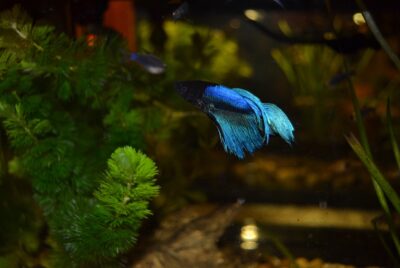Is Hot Glue Aquarium Safe?
Introducing the topic of the safety of hot glue in an aquarium, a prevalent adhesive among crafters, DIY enthusiasts, and hobbyists. While it is known for its ease of use and quick-drying properties, concerns have been raised about its safety for fish. The question on everyone’s mind is “Is hot glue aquarium safe?” In this article, we will explore the use of hot glue in an aquarium, the potential risks it poses to fish, and provide an overall conclusion on its safety for use in an aquarium.
What is hot glue?
Hot glue is a type of adhesive that is heated until it melts and can be applied to a variety of surfaces. It is commonly used in arts and crafts, DIY projects, and for minor home repairs. There are two types of hot glue, namely low-temperature hot glue and high-temperature hot glue.
Low-temperature hot glue can be used on delicate materials such as paper, fabric, and foam without causing any damage. High-temperature hot glue, on the other hand, is more durable and can bond materials such as wood, plastic, and metal.
Is Hot Glue Aquarium Safe?
Before using hot glue in an aquarium, it is essential to consider the potential dangers that it poses to your fish. Hot glue can be toxic to fish if ingested or if it leaches chemicals into the water. Therefore, it is important to use aquarium-safe hot glue to prevent harm to your fish.
Factors to consider before using hot glue in an aquarium include the type of glue used, the application method, and the curing time. Some hot glues may be marked as aquarium safe, while others are not. It is best to check the packaging thoroughly before using hot glue in your aquarium. Aquarium silicone and epoxy are recommended as they are waterproof and aquarium safe.
How to use hot glue in an aquarium safely
Using hot glue safely in an aquarium involves following some necessary steps. Before using hot glue to bond any aquarium materials, it is essential to prepare the glue. This can be achieved by using a dedicated glue gun, cleaning the tip thoroughly, and selecting the right glue.
Once the glue is prepared, remove any moisture from the area and clean it thoroughly to ensure that the glue adheres properly. After you have applied the glue, allow it to dry completely before placing the object in the aquarium. You should not allow hot glue to come into contact with the water in the aquarium.
Common problems when using hot glue in an aquarium
While hot glue can be useful in aquariums, there are also some potential problems associated with its use. One of the most common issues is peeling. This can occur if the glue is not applied correctly or if the surface was not adequately cleaned before applying the glue.
Another potential problem is cloudiness. Cloudiness can occur if the hot glue is not allowed to dry completely, leaching chemicals into the water. This can have adverse effects on the fish and the plants in the aquarium.
Leaks are common problems when using hot glue in an aquarium. If the glue is not applied correctly, it can lead to leaks, which can be dangerous for the fish and other aquatic life in the aquarium.
Injuries are also a potential problem when using hot glue in an aquarium. Sharp points can be created if hot glue is not applied correctly or if it has peeled away from the surface.
Conclusion
In conclusion, hot glue can be used in an aquarium, but it has to be used carefully and correctly. Before using hot glue in an aquarium, it is essential to select the right type of glue, clean the area thoroughly, and use it sparingly. You should also ensure that the glue does not come into contact with the water and that it dries completely before placing any item in the aquarium. Aquarium silicone and epoxy are recommended as safer alternatives to hot glue.
In addition to these best practices, it is also a good idea to monitor the aquarium regularly for any signs of problems such as peeling, cloudiness, leaks, or injuries to the fish.
As a fish enthusiast and advisor, I understand the importance of providing a safe and healthy environment for our fish. While hot glue can be a useful adhesive, it is essential to consider the risks associated with its use and take the necessary precautions to ensure that it is used safely in an aquarium.
FAQs About “Is Hot Glue Aquarium Safe?”
Can I use regular hot glue in my aquarium?
Don’t use regular hot glue in aquariums as it can be toxic to fish. Check the label of aquarium glue for safety.
Is aquarium silicone better than hot glue?
Yes, Aquarium silicone is better for bonding aquarium items because it’s waterproof and safe for fish..
How long does it take for hot glue to dry in an aquarium?
Wait for hot glue to dry completely, which takes 1-3 minutes, before adding anything to aquarium.
How long does aquarium silicone take to dry?
Aquarium silicone dries in 24 hours; time depends on surrounding temperature and humidity.
What are the signs of hot glue problems in an aquarium?
The signs of hot glue problems in an aquarium may include peeling, cloudiness, leaks, or injuries to the fish. It is essential to monitor the aquarium regularly and address any issues promptly.




